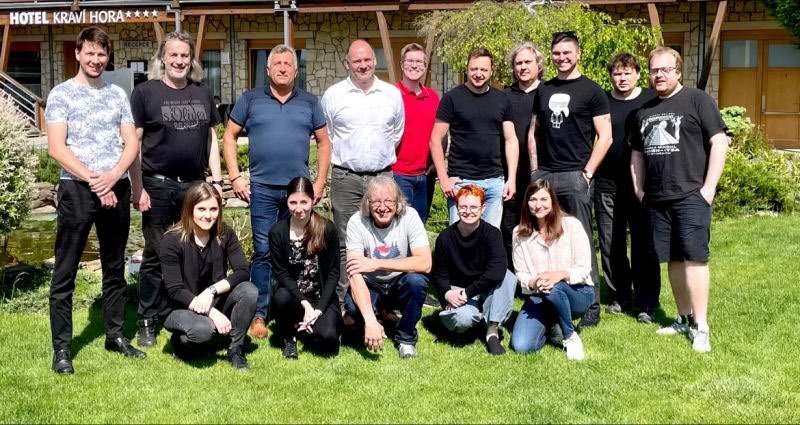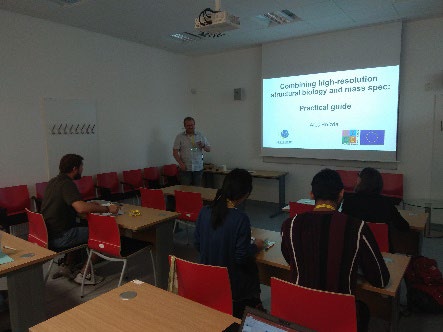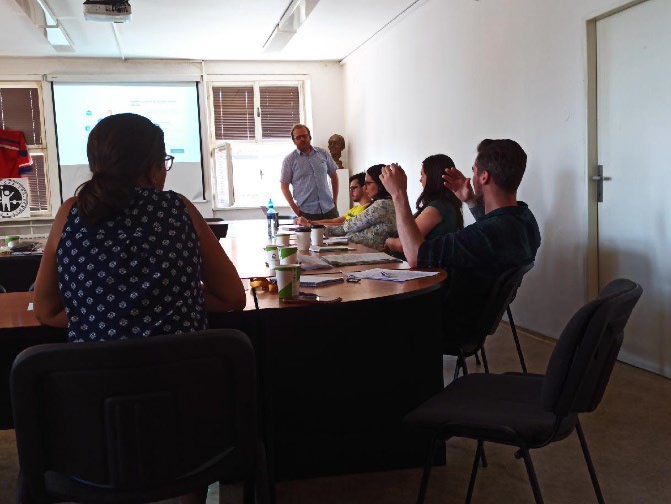Title of the Framework Program: Horizon 2020
Name of the project:
Structural insights into binding signatures of transcription factors regulated by HIPPO signalling
| Acronym | HIPPOSTRUCT |
| Number and ID code of the project | N°101003406, H2020-WF-02-2019 |
| Type of the project | MSCA-IF-EF-ST |
| Coordinator | Institute of Microbiology of the CAS, v.v.i. |
| IMIC Principal Researcher | Ing. Aleš Hnízda, Ph.D. |
| Start of the project | 6/2020 |
| End of the project | 5/2022 |
| Total number of particip. countries | 1 |
| Of which from EU | 1 |
| Number of partners | 0 |
| Total funding for the project | 156 980,64 EUR |
| Funding for IMIC | 156 980,64 EUR |
| Provider | Program EU Horizon 2020 MSCA-IF-EF-ST – Standard EF |
Objective of the project:
The aim of this project is to analyze the cooperative binding of transcription factors (TFs), which are regulated by the HIPPO signaling pathway. We will focus mainly on TFs from the TEAD and FOX groups, which probably work together to regulate the same transcription programs. We will use a bioinformatic search of the human genome followed by experimental analysis of intermolecular interactions between TF and DNA, which will be followed by structural analysis of selected macromolecular complexes. The results will provide information on the mechanisms by which TFs cooperate in relevant sections of the genome with the corresponding chromatin architecture.
Final Report of the project:
Final report of MSCA Fellowship (Aleš Hnízda – HIPPOSTRUCT, July 2020)
Public Synopsis
1 – Summary of the context and overall objectives of the project (For the final period, include the conclusions of the action)
This section should include information on:
– What is the problem/issue being addressed?
– Why is it important for society?
– What are the overall objectives?
The project “Structural insights into binding signatures of transcription factors regulated by HIPPO signaling” studies how non-coding parts of genome are recognized by regulatory proteins called transcription factors. The interplay between genome and transcription factors decides which genes are expressed in the cell. If not working properly, misregulated gene expression is a cause for many fatal diseases including cancer or neurodegeneration.
Research idea of this work was that many transcription factors act in cooperation, and this cooperative action is still not well understood due to limited capacity and technical caveats of the available research tools. We aimed to combine genome searches and traditional structural and biophysical techniques with mass spectrometry. Such hybrid approach has not yet been used in this field and particularly using mass spectrometry might overcome some obstacles due to its versatility and high capacity.
Working on this topic might increase understanding of what functions large parts of the human genome called “non-coding regions” have. Deeper knowledge will help more confident interpretation of genomic data, which will improve healthcare system including prevention, accurate and fast diagnostics and more personalized treatment of diseases.
Objectives of this Marie Skłodowska Curie Action (MSCA) have been to (i) to identify genomic regions that are simultanously targeted by transcription factors from TEAD and FOX groups. Using given bioinformatic workflow, to analyze mutations causing selected diseases (ii) to describe how the involved molecules (DNA segments, TEAD and FOX transcription factors) influence each other. In other words: Do they form ternary complex? Is their binding cooperative ? If so, positively or negatively? (iii) to determine spatial arrangement of these macromolecular complexes. In parallel, the goal of the MSCA Individual Fellowship is a personal growth of the Fellow (me) towards scientific independence.
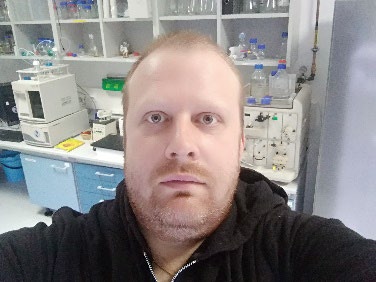
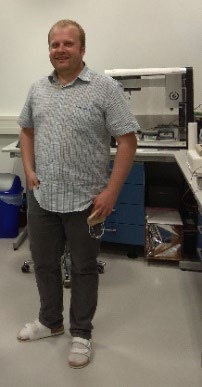
Taking care of protein biochemistry in the Host lab.
2 – Work performed from the beginning of the project to the end of the period covered by the report and main results achieved so far (For the final period please include an overview of the results and their exploitation and dissemination)
The research of the project was done in three work packages (WP1-WP3). WP1 included bioinformatic searches in human genome followed by experimental validations. We identified 15 candidate regions which are localized in regulatory regions of the genome and contain sequence motifs targeted by both TEAD and FOX transcription factors. Experimental tests reveal that 5 of 15 regions form stable ternary complexes. The most stable complex was observed with DNA region, marked as NO2 oligonucleotide, was selected for further work. WP2 comprised a detailed characterization of ternary complex FOX-TEAD-NO2. It contained the application of well-established techniques in the Centre of Molecular Structure in BIOCEV and in the Host lab. In addition, we developed new approaches for studying these biomolecules. We found that FOX and TEAD factors compete about one DNA site and we determined intermolecular contact areas during this competition. Next, we identified FOXK factors as potential binding partners for TEAD. Therefore, we studied FOXK1 and FOXK2 in details and we explored which genes are targeted by FOXK and verified them experimentally. WP3 aimed to study transcription factors bound to nucleosomes which are basic units of DNA package in cells. We developed a workflow for purification of human histones and DNA fragments. The work with nucleosomes will continue even after the MSCA fellowship (ongoing collaboration between the Fellow and the Host lab). Developed workflow has been further used for evaluation of pathogenic mutations in histone methyltransferases causing Kleefstra syndrome and related diseases.
During the work on research projects, I supervised one high school student (Open Science project), one bachelor (thesis defended in summer 2021), one master (semestral project in winter 2021) and one graduate student (ongoing study started in 2020). I was also involved in teaching at Charles University as a co-tutor for subjects Modern Methods in Protein Research (two lectures per year) and Statistics in Biomedicine (one lecture in 2021).
I have received training in bioinformatics (prof. Kmoch at Charles University), mass spectrometric techniques (via collaboration during project in the Host lab), analysis of diffraction data (workshops organized by CMS BIOCEV) and single molecule microscopy (a course given by IMCF BIOCEV). Further, I attended on-line course “Researcher Management and Leadership” by Coursera.org. Management skills were further promoted via interaction with people from GeneSpector Innovations, a start-up company developing novel diagnostic approaches. I was also connected with clinical geneticists (University Hospital in Prague, Dijon Bourgogne University Hospital) and structural biologists (IOCB Prague, Munich University) to share knowledge.
Results of our research will be reported in 5 papers underway (one under review, two manuscripts in preparation, two projects need more supporting data). This work has been presented at three conferences via poster communication and two talks at research workshops. Our research has been popularized via my visit at High school in Krnov, at the Science Fair at VedaFest. Our activities were posted at Web (mbucas.cz, peterslab.org, gymnaziumkrnov.cz), Twitter (@peterslab1), Facebook (Gymnazium Krnov, my personal account, Mikrobiologický Ústav Akademie Věd) and LinkedIn (GeneSpector Innovations, my personal account).

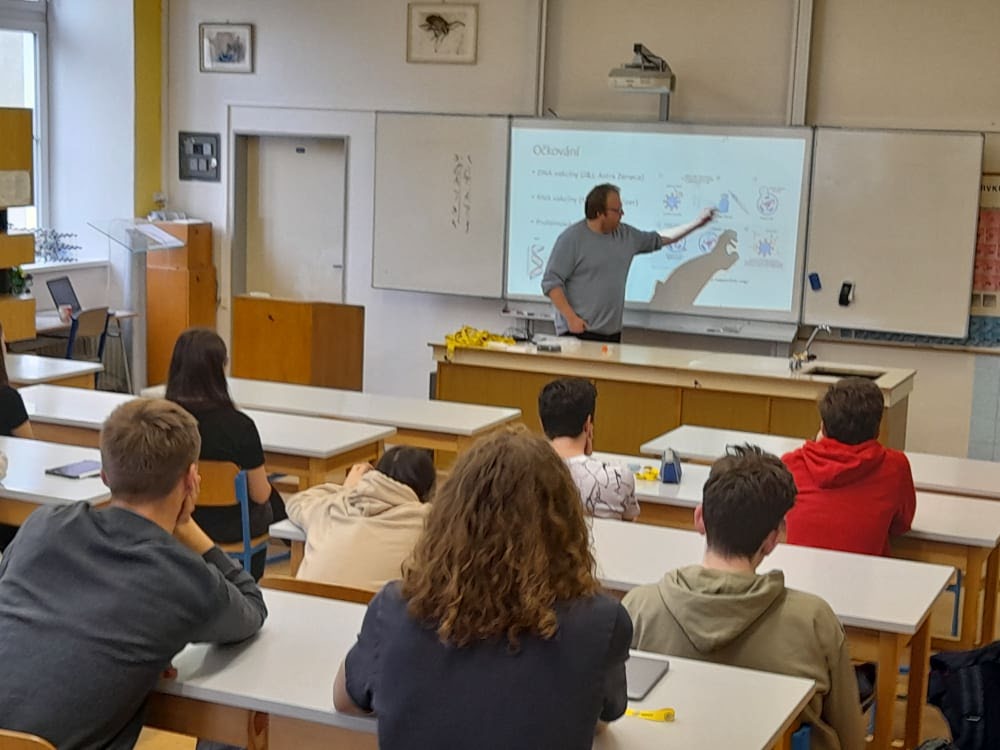

Our dissemination activities during the MSCA.
3 – Progress beyond the state of the art, expected results until the end of the project and potential impacts (including the socio-economic impact and the wider societal implications of the project so far)
This MSCA project aimed to perform multidisciplinary research for better understanding of a cooperative action of transcription factors bound to DNA. Innovative aspects included: I, using structural biology for more efficient interpretation of genomic data. II, implementation of mass spectrometry for studying multicomponent protein-DNA complexes. Ad I. Structural analysis was used for the interpretation of disease-causing variants in patients with atypical Fabry disease and Kleefstra syndrome. We have organized four meetings with clinical geneticists to explain benefits of using structural biology for interpretation of disease-causing variants. This activity has a potential to improve efficiency of genetic testing in a clinical setup. Ad II. Our research data clearly demonstrated the power of mass spectrometry in two cases of limited applicability of traditional structural (X-ray crystallography) and biophysical (circular dichroism) techniques. These results show that mass spectrometry should be considered as the “first-choice technique” for studying complex biological macromolecules. We also presented these results in scientific meetings to highlight a usefulness of mass spectrometry. It might improve quality of research addressing spatial arrangement in DNA-complexes which has a great importance for understanding biological processes in health and disease.
Further, our popularization activities were aimed to increase awareness of using either genetic or mass spectrometric techniques in healthcare. The role of genetics in modern medicine was discussed with high
school students in Krnov. Potential applications of mass spectrometry to promote more efficient and faster diagnostics were presented at two popularization festivals for general public. Moreover, we initiated networking between labs from academia with biotech companies in order to evaluate pros and cons of mass spectrometry used in clinical practice.



